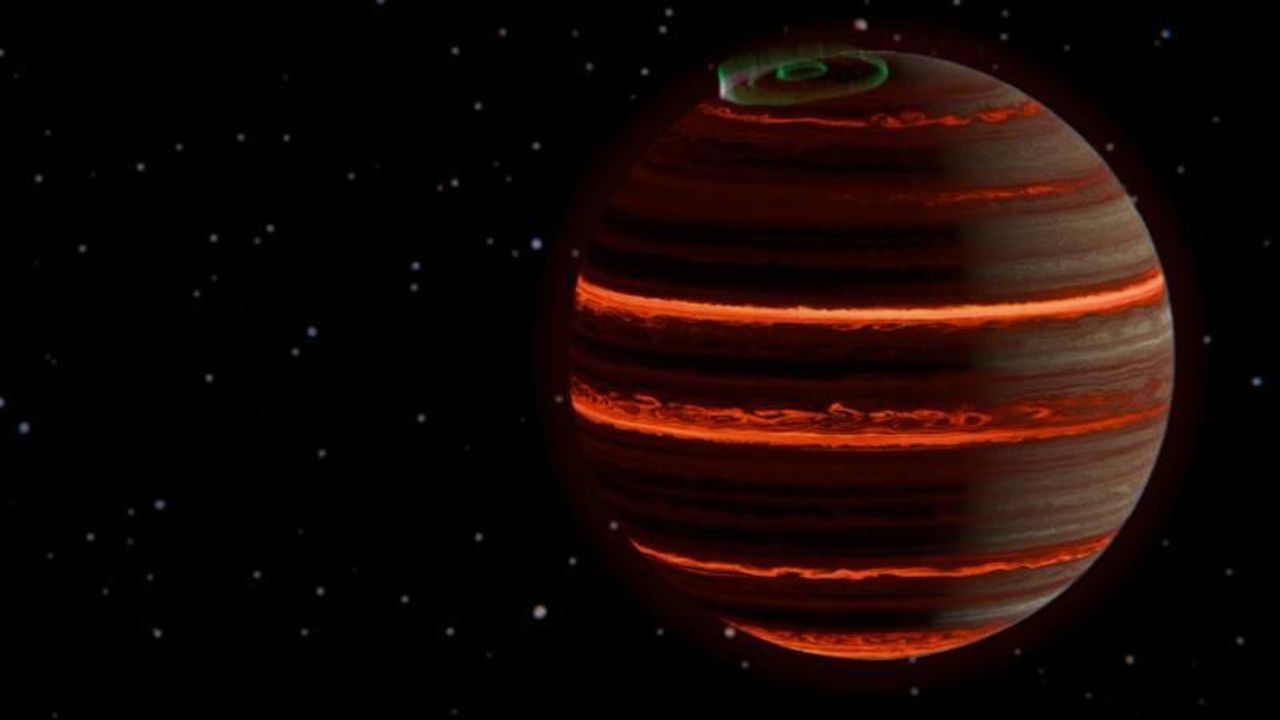A team of astronomers has produced the first detailed “weather report” for a brown dwarf named SIMP-0136, located approximately 20 light-years away in the constellation Pisces. This rogue world, which does not orbit a sun, spins rapidly once every two and a half hours. The findings, made possible by the James Webb Space Telescope (JWST), were published on September 26, 2023, in the journal Astronomy & Astrophysics.
Unlike planets or stars, SIMP-0136 is classified as a brown dwarf, often referred to as a “failed star.” It forms from collapsing gas clouds but lacks the mass necessary to initiate hydrogen fusion, the core characteristic of a star. In this unique research, astronomers tracked subtle atmospheric changes over a full rotation of the brown dwarf, revealing significant insights into its weather.
Key Discoveries from JWST Observations
The study led by Evert Nasedkin from Trinity College Dublin marks a significant advancement in exoplanetary science. “These are some of the most precise measurements of the atmosphere of any extra-solar object to date,” Nasedkin stated. The research team directly measured changes in atmospheric properties, which had not been done before.
By monitoring the flickering light from SIMP-0136, scientists were able to map its atmospheric layers. Contrary to previous assumptions that the fluctuations were due to variable cloud coverage, the study revealed that the brown dwarf’s clouds are made of sand-like grains of hot silicates and are remarkably stable.
The most striking finding came from upper atmospheric layers, where temperatures reached approximately 570 degrees Fahrenheit (300 degrees Celsius), significantly warmer than previous models suggested. The researchers believe this extra heat is due to intense auroras driven by the brown dwarf’s strong magnetic field.
On Earth, auroras are created when solar wind particles interact with our magnetic field, producing vibrant light displays. In the case of SIMP-0136, the interaction is much more potent, resulting in the atmosphere not only glowing but also heating up dramatically.
Implications for Future Exoplanet Research
The JWST also detected minor temperature variations of less than 40 degrees Fahrenheit (5 degrees Celsius) in deeper atmospheric layers. These fluctuations may be influenced by vast storm systems reminiscent of Jupiter’s Great Red Spot, which move across the brown dwarf’s surface as it rotates.
Brown dwarfs like SIMP-0136 serve as excellent analogs for distant exoplanets orbiting other stars. The detailed weather patterns observed in this study provide valuable data for understanding the atmospheres of such worlds. “Understanding these weather processes will be crucial as we continue to discover and characterize exoworlds in the future,” stated Johanna Vos, a co-author of the study.
With ongoing advancements in observational technology, including the JWST and upcoming facilities like the Extremely Large Telescope and NASA’s planned Habitable Worlds Observatory, astronomers are optimistic about applying these innovative techniques to study the atmospheres of distant planets. This research is paving the way for a deeper understanding of how weather shifts and evolves on worlds far beyond our solar system.





































































